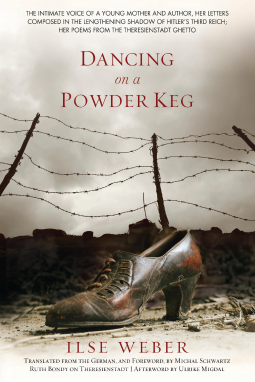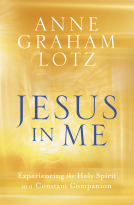
Dancing on a Powder Keg
An Authentic Voice from the Dead
by Ilse Weber
This title was previously available on NetGalley and is now archived.
Send NetGalley books directly to your Kindle or Kindle app
1
To read on a Kindle or Kindle app, please add kindle@netgalley.com as an approved email address to receive files in your Amazon account. Click here for step-by-step instructions.
2
Also find your Kindle email address within your Amazon account, and enter it here.
Pub Date Mar 29 2017 | Archive Date Feb 07 2018
Bunim & Bannigan in association with Yad Vashem (World’s Holocaust Remembrance Center) | Bunim & Bannigan in association with Yad Vasehm
Description
On May 6, 1939, Ilse Weber, in writing to her sister-in-law, Zofiah Mareni, noted "You will probably be happy to know how do we live here now? Well, at least we're not pestered by boredom. It's like dancing on a powder keg. The air is impregnated with insane rumors, which we no longer believe." Starting in 1933, Ilse's letters recorded the lives of her small family during a time of increasing danger, when Europe descended from peace to the chaos of war and genocide.
In 1933, Ilse Weber lived in her ancestral town, Vítkovice, near the industrial area of Moravia-Ostrava in northern Czechoslovakia. She was thirty, married to Willi Weber, and had a son Hanus, aged two. As author of children's books and radio scripts, she used her maiden name, Ilse Herlinger. She wrote in German, the language of that border region, thinking of herself as a Czech. Lilian von Löwenadler, to whom the letters were mostly addressed, was the daughter of a Swedish diplomat, with whom Ilse had maintained an epistolary relationship since childhood, enhanced by personal visits. At that time Lilian was living in England. In 1934, Ilse gave birth to a second son, Thomas. In 1938, Hitler's Third Reich annexed Vítkovice and the rest of what it called Sudetenland. Soon after, it occupied all of Czechoslovakia.
In the spring of 1939, the Webers, now living in Prague, sent Hanus on a Kindertransport to London, to Lilian, who took him to Sweden to live with her mother. In 1942, Ilse, Willi and Tommy were sent to the Thersienstadt Ghetto. Working there in the children's infirmary, Ilse entertained the patients with songs, accompanying herself on her contraband guitar. It is these songs and poems, mail correspondence having become near impossible, in which we can trace Ilse's last years. As inmates disappeared on trains to 'the East,' Willi hid his wife's music and poems in a work shed with his gardening tools. He went 'east,' followed, later in 1944, by Ilse and Tommy. In the autumn of 1945, Willi, having survived in a labor camp, was joined by fourteen year-old Hanus and they recovered Ilse's songs and poems. After a year of anxious inquiry, they relinquished hope that Tommy and Ilse were alive.
We would not have the letters had not someone, decades later, while cleaning out a London attic, found them in a box.
A Note From the Publisher
Physical ARC/galley copies & interviews with the book's translator, Michal Schwartz, available upon request.
Advance Praise
“The literature about Theresienstadt (Terezin) and the fate of Czech Jewry during the Holocaust is voluminous, but Ilse Weber's story is unique. A tremendously gifted young woman, a poetess and musician, a son who is rescued to Britain and Sweden, a devoted husband, and many of whose wonderful poems have been miraculously rescued, form a unique testimony. Ilse Weber worked as a sick-nurse in a children's sick-room in Theresienstadt, and refused to abandon her charges when they were transported to Auschwitz. Miraculously, again, her last words at the entrance to the gas chamber were preserved. Her husband survived, and her older son finally made this publication possible. I have read many accounts, but this account by someone who did not survive, and whose story has been reconstructed, is exceptional.” -- Prof. Yehuda Bauer, Yad Vashem
“…Ilse’s charismatic and helpful personality made these poems not only popular, but for many inmates they became more important than “water and bread,” as they restored their courage to face life, pride and hope… the book’s story and the fate of its protagonists, finally wrested from oblivion… is absolutely touching… it necessitates a filming of Ilse Weber’s life…it must be recognized by future generations as one of the most important testimonies of the Shoa.” -- Florian Hunger, Jüdische Zeitung
“…with her smuggled guitar, this charismatic woman made music secretly half night through … Ilse became a legendary figure among the survivors of Theresienstadt.” -- Oliver Pfohlmann, Neue Zürcher Zeitung,
“Reading these [letters] today one remains speechless. Likewise the straightforward and visually expressive poems. They present themselves without flourish and embellishment, and for that they are gripping.” -- Roland Maurer, Der Kleine Bund, Züruch
“….even today, 60 years after the horrible events… Ilse Weber’s letters and poems... manifest the fate of an individual in dark times… get “under our skin.”” -- Hugo Ernst Käufer, Westdeutsche Allgemeine Zeitung.
“Letters written to a best friend are something very personal…One confides things one doesn’t dare say loud, one is even afraid to think… I read Ilse’s letters and at times couldn’t hold back the tears: not because this young, educated woman was maudlin, but because I could not stop the calamity. To hope that the course of events would suddenly change is of course naive…but one must have hope when we get so close to this woman, get to know her…” -- Stefanie Nannen, Hamburger Abendblatt.
Available Editions
| EDITION | Other Format |
| ISBN | 9781933480398 |
| PRICE | CA$39.95 (CAD) |
Average rating from 29 members
Featured Reviews
 Amanda H, Reviewer
Amanda H, Reviewer
I was immediately drawn to this book by the cover. When I read the synopsis regarding the content, I requested this without hesitating. I find WWII and the stories that followed to be captivating. I am fascinated with that time in history and I still struggle with how the Holocust was allowed to happen. Unfortunately religious persecution is alive and well today, showing me that we have a long way to go. Reading the letters that Ilse wrote to her friend Lillian, I was able to get a glimpse into her life and the troubled times they were living in. I was disappointed, however, that the only letters in the book are those from Ilse, no responses from those letters are in this book. I realize that they are most likely destroyed but it would been interesting to see the different view points. This book also contains poems that Ilse wrote. They were beautifully written and give the reader another glimpse into their troubled lives.
Overall, I was happy with the book and I would recommend it to friends. Thank you Net Galley for providing me with an advanced copy of this book.
 Jane W, Reviewer
Jane W, Reviewer
Heartbreaking and wonderful true story of a Jewish mother during the Nazi persecution. Details of her life through letters, poems and drawings. Ilse's writings express her feelings of despair, hope, fear, disbelief and her sacrificial love for her family and others. We will never truly know the sufferings of the Holocaust but Ilse Weber gives us a glimmer of understanding through her writing.
 Reviewer 238609
Reviewer 238609
Dancing on a Powder Keg by Ilse Weber is a collection of letters from 1933-1944 written mainly to a friend. It is also a collection of poems written inside a Jewish Ghetto during the Nazi occupation.
These letters tell of the life of a Jewish family before the occupation as well as how it became extremely difficult for them during the occupation and of there eventual transport to a ghetto.
The poems tell the true story of life for Jews in the ghetto. It tells of their distress and the horrors they endured. Due to censorship any letters from the ghetto made it appear all was well which is why the poems which were hidden away are so important as they show the truth of life for the Jewish people of the ghetto.
I would recommend this book for anyone interested in poems written by those in the ghetto and interested in the history of the Holocaust. I think books like these are important as we must learn from the past.
I acknowledge that I received this book free of charge from NetGalley in exchange for my honest and unbiased opinion of it
 Gena D, Educator
Gena D, Educator
Haunting.
Knowing the outcome lends an incredible poignancy to these letters and poems.
 Reviewer 201788
Reviewer 201788
In 1942, Jewish author Ilse Weber was deported from Prague along with her husband Willi and the younger of her two sons to Theresienstadt, the Jewish ghetto and the Nazis' "model" concentration camp, trotted out as a fake village for events like Red Cross visits. Beginning in 1933 as political and social changes began taking root across Europe, Ilse had been writing prolifically to her friend Lilian, a Swede then living in London. The first part of Dancing on a Powder Keg is a collection of these letters, detailing the everyday and the mundane. Eventually, Ilse and her husband sent their older son to Lilian in England on one of the famous Kindertransports, ultimately saving his life.
Ilse and her younger son, like millions of others, didn't survive the camp system, perishing in the gas chambers of Auschwitz. Ilse worked in Theresienstadt as a nurse on the children's ward, and volunteered to accompany a transport of sick children east to Poland, even though the camp inmates were already well aware of what that move entailed. In the book's enlightening afterword, details of her actions in this time and her incredible bravery finally emerge after many years.
Ilse's husband buried her poems in Theresienstadt, saving them from the chaotic postwar destruction, and some were published without crediting the author. Her surviving son recognized one of these published poems years later, and finally the author was matched to her life's creative work. Along with this identity revelation came stories about how inspirational and comforting her poems and songs had been to others in the camp.
The book really gets interesting in its second half, composed of the poems and bits of songs and lullabies Ilse wrote during her imprisonment in Theresienstadt. Even in translation, her words are simple but touching, often heart- and gut-wrenching. She had a strong but sensitive soul, and she pulls back the curtain on what the Nazis tried so hard to obscure from the rest of the world in the ghetto, baring the unimaginable pain and horrors inflicted on the prisoners there. Her poems are absolutely haunting, impossible to read without being deeply affected. Accompanying illustrations by a Czech artist, Bedrich Fritta, created within Theresienstadt, are powerfully haunting and provide fitting imagery to match her emotional poetry.
I found that many of the letters to Lilian dragged on and didn't contribute much meaningful content to the book as a whole. I do find it interesting to read about daily lives of another era, especially World War II stories, but I couldn't stay interested in the intricacies of family members and relationships, particularly since so little happened for so long in the course of the letters. They could have been edited for greater impact, because her story was inarguably emotionally impacting and her poems so haunting and beautiful that this could've been a really great historical work.
As it is, combined with its telling of her life story, the book is still a worthy testament to a woman who gave not only inspiration and hope to so many in the camps, but with her words and creativity, gave them voices to echo through history and a lasting testament to their experiences.
Heartfelt, heartbreaking and tragic. Remembering these events happened, while reading. I highly recommend this book.
 Heidi R, Reviewer
Heidi R, Reviewer
The book to me was slow but it was a good book. I would recommend this book for anyone interested in poems written by those who suffered with the Holocaust. I am not sure if the book would be set up differently than the kindle edition but that made it hard to read when it seemed to be broken up in spots that shouldn't have been. The book is about a woman who wrote letter and poems about her life when she felt she had nothing to fear and when she did.
 Fran E, Reviewer
Fran E, Reviewer
Ilse Weber was a gifted writer of children's plays, poetry and music. Her plays were broadcast on German radio often supported by a cast of children. Her broadcast days were numbered as Anti-Semitism took hold in her adopted town of Witkowitz, Czechoslovakia. Ilse loved her homeland passionately. The town residents, German as well as Czech, were now waiting until Hitler came, whether out of fear or fervor.
In 1933, Ilse started writing frequent letters to her Swedish friend Lilian von Lowenalder. The letters recorded the struggles faced by Ilse, husband Willi, and children Hanus and Tomas as Hitler's rise to power corresponded with the de-Jewification process to obliterate Jewish art, music and literature. Her fears, frustrations and struggles to safeguard her family were conveyed to Lilian. In 1937, a letter recounted the story of a Jewish restaurant owner, a convert for 30 years. By shooting a drunken farmer in self defense, riots and looting abounded with terrible consequences for Polish Jewish residents. As boycotts of Jewish shops and refusal to employ Jewish workers escalated, Ilse and Willi determined that they must apply for emigration to Palestine. Fears for the safety of the children forced Ilse to make an uneasy, heartbreaking decision. Nine year old Hanus was sent on the Sir Nicholas Winton transport to London to stay with Lilian. Hanus later traveled to Sweden and was hosted by Lilian's mother, Gertrude.
Travel visas to Palestine and Sweden were now no longer being issued. Ilse indicated that correspondence from Lilian, Gertrude and Hanus gave her hope and encouragement. The letters provided distraction and happiness. Music was a comforter as well. When the Webers were sent to the Theresienstadt ghetto in 1942, she volunteered to work as a nurse in the children's hospital. Although music was not allowed, a guitar was smuggled into the hospital.
From 1942-44, Ilse told sick children stories and sang them lullabies. She wrote 60 poems in Theresienstadt, poems that were recovered after the war. One poem called "A Satchel Speaks" described an abandoned suitcase looking for his traveling companion, a gentle man.The satchel wanted to be reunited with it's owner. "Blue Hour at the Children's Ward" addressed the gnawing pangs of hunger. One child dreamed of living in a land offering nothing to do except eat. Another child wished he could eat the food he left on his plate. The poems are a testament of the harrowing, life and death struggles played out in Theresienstadt.
"Dancing on a Powder Keg: The Intimate Voice of a Young Mother and Author, Her Letters Composed in the Lengthening Shadow of the Third Reich; Her Poems from the Theresienstadt Ghetto" by Ilse Weber is a haunting, chilling record of a world at war, where peace descended into chaos and genocide. Weber's letters and poems are vital to promoting further understanding of the Holocaust.
Thank you Smith Publicity, Bunim & Bannigan, and Net Galley for the opportunity to read and review "Dancing on a Powder Keg".
 SUZANNE T, Bookseller
SUZANNE T, Bookseller
This book, which is a collection of letters and poems, written by Ilse Weber from pre-war Moravia in 1933 to February 1942, when Ilse and her younger son are deported from Theresienstadt to Auschwitz in 1944. A professional writer, Ilse wrote scripts for radio, children’s books and songs. As life for Czech Jews became increasingly dangerous, she sends her eldest son to live with an old friend in England. Her letters detail the slow chiseling of her country by the Nazis and the family’s futile attempts to leave the country.
Throughout her narrative, there is always hope and the belief that things can never get worse. As things do grow worse, she displays an outward resilience. As a nurse on the children’s ward at the Theresienstadt concentration camp she sings to the children, writes poetry and encourages the children to draw. The camp writings are secreted in a shed and later retrieved by her husband after the war.
Ilse’s eldest son, Hanuš, does not understand why he is separated from his family. Her letters to him are filled with benign daily routine and gentle reminders to be a good boy. He does not learn the full truth of his family’s nightmare until he is an adult, which makes this first-hand account of the holocaust by someone who did not survive is all the more poignant.
 Educator 411759
Educator 411759
<b>**I received a digital copy of this book from Netgalley in exchange for an honest review.**</b>
<b>Introduction</b>
I know it sounds cliche, but I know of no other way to say it: the humanity of this book will haunt you. Isle Weber's story, pieced together through records from Yad Vashem and her personal letters and poems, is one of the most moving Holocaust accounts you will ever read.
<b>The story</b>
Ilse Weber was a brilliant, creative, artistic soul. She was a doting wife, a loving mother, and a loyal friend. She wrote beloved radio programs for children, as well as musicals and poetry. She was also a Jew. As such, her fate was sealed when Hitler tore through her homeland. She loved Germany and the German language, which was her native tongue. The book opens with her letters mostly to her friend, Lilian. As the years progress, Ilse's letters are more and more emotional as she watches the world around her devolve into evil. She describes how former neighbors and friends ignore or even verbally attack her in public. She is confused by the political changes that seem to drive personality changes in almost everyone she knows.
Eventually, Ilse and her husband (Willi) make the heart-wrenching decision to send their oldest son, Hans, to live with friends in England. Hans arrives safely via Kindertransport and spends the rest of the war bouncing around England and Sweden. Meanwhile, Ilse and Willi bounce around Czechoslovakia and Poland with their younger son, Tomas. Ilse and Willi find it increasingly hard to find work and they both begin to suffer from various chronic illnesses. They find comfort in their community and Ilse's poems. As the Jews are thrown together in the ghetto of Theresienstadt, Isle volunteers to work in the children's hospital, playing her illegal guitar to cheer up the suffering children. Eventually, Ilse heroically refuses to abandon the children as they are rounded up for transportation. She was killed along with all the children, including her son Tomas, in a gas chamber at Auschwitz. Willi is taken to the camps too, but not before he is able to bury Ilse's poems. He survived and was able to retrieve them after the war. Hans survived as well and helped publish this account of his mother's last days.
<b>Literary analysis</b>
At first I wasn't sure I would be able to get into a book comprised of personal letters, especially as it is only from Ilse's perspective. I'm also not usually a huge fan of poetry. I was blown away by everything in this book. The letters drew me in with their simple, honest, emotional accounts of Ilse's daily life. She talks about being a mother, caring for her household, trying desperately to hold her family together as the world around her fell apart. This book read like Anne Frank meets Sophie's Choice. It tore my heart out. I cannot fathom sending my child away. I cannot imagine what must have been going through her mind on that last trip with all those children. I cannot even begin to know what would have gone through her mind standing in that gas chamber, clutching her son, sensing that the end had come...
Any grammatical errors were original to Ilse, and honestly are few and far between (possibly attributed to her efforts to learn and write in new languages). This book was difficult to read on an emotional level, but incredibly moving.
<b>Conclusion</b>
I cannot recommend this book highly enough. It is unique in a way similar to Anne Frank, but from the perspective of a courageous and loving mother and wife. <u>I want the world to read this book and never, ever forget Ilse Weber, her family, and the other 6 million Jews who were murdered in the Holocaust.</u>
<b>**Special note: If you ever have the opportunity to visit Israel, you <i>must</i> make the trip to Yad Vashem. It is breathtaking and unforgettable. It is absolutely worth your time. It forever changed my perspective on the Holocaust and the Jewish people.**</b>
This book is a collection of poems and letters written by the author. It begins with a brief synopsis of the authors life and then you read the letters. After the letters, you then read how the author went to the Ghetto and then poems. Finally, a few pages of what had happened after the Holocaust.
I liked the story, however the book felt like it was just crammed in. I think the book could have been better if they had they told her story in a timeline order,,,with the letters, a narrative, and poems.
Otherwise is was a good Holocaust narrative. Sad and left the reader wanting to yell at the book....NO! RUN!
 Teresa Y, Reviewer
Teresa Y, Reviewer
Dancing on a Power Keg by Ilse Weber
WWII books are one topic I read regularly, always looking for another side of the story. I was thinking this book would be a dairy of Ilse and in a way it was. The story is told thru letters that Ilse sent to Lillian, a childhood friend of hers, also sent to her son and other letters she had written during the war years. I was a little disappointed in the letters, they did not actually go thru her daily life of what they endured, but she was mainly asking for assistance.
Ilse and Willi decided to send their oldest son away during the war years for safety and education, the letters were asking of his well-being and any information she could receive about him. Also, the letters are rather vague on daily life as the war progressed, they didn’t go into as much detail as I had expected, most of the time Ilse said they were all fine and were eating. On the other hand, the book also has a lot of background on the war and Ilse and Willi’s early years, featuring letters from survivors that had met Ilse and Willi in the ghetto or the war camps. I was most impressed with Ilse’s poetry, it was beautiful, if you read the book for nothing other than her poetry, it would be well worth it. I am giving this book 5 stars for the poetry, the WWII information and for Ilse’s story. She was an exceptional, talented person who accomplished many things in the short time she was here. I’m sure she blessed the lives of many people she encountered.
I thank NetGalley for giving me the opportunity to read this book for my review.
A touching, intimate and unique perspective on a harrowing time. This isn't an easy book to read, knowing the outcome before going in, but it's definitely worth reading.


















